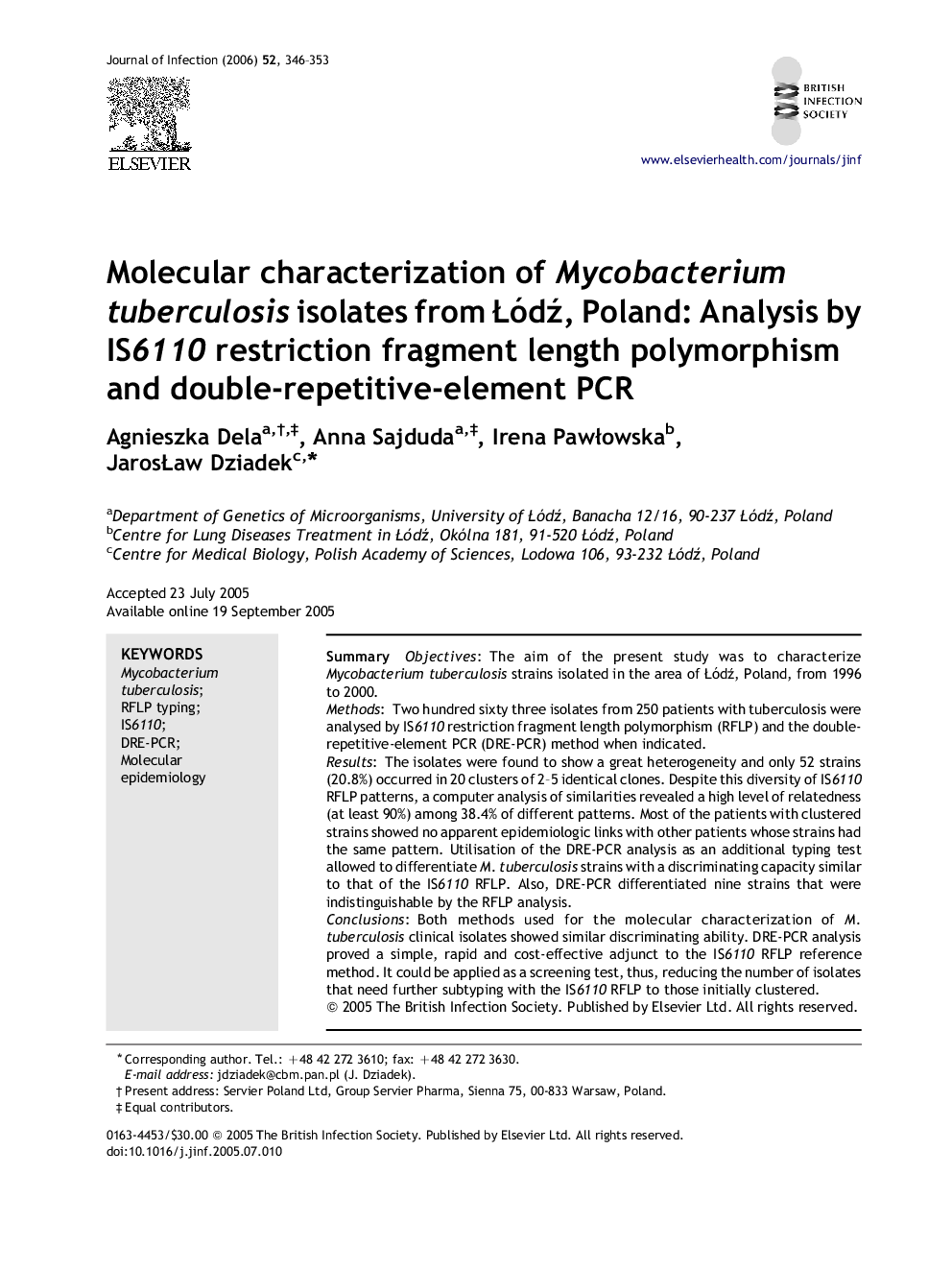| کد مقاله | کد نشریه | سال انتشار | مقاله انگلیسی | نسخه تمام متن |
|---|---|---|---|---|
| 3376479 | 1219737 | 2006 | 8 صفحه PDF | دانلود رایگان |

SummaryObjectivesThe aim of the present study was to characterize Mycobacterium tuberculosis strains isolated in the area of Łódź, Poland, from 1996 to 2000.MethodsTwo hundred sixty three isolates from 250 patients with tuberculosis were analysed by IS6110 restriction fragment length polymorphism (RFLP) and the double-repetitive-element PCR (DRE-PCR) method when indicated.ResultsThe isolates were found to show a great heterogeneity and only 52 strains (20.8%) occurred in 20 clusters of 2–5 identical clones. Despite this diversity of IS6110 RFLP patterns, a computer analysis of similarities revealed a high level of relatedness (at least 90%) among 38.4% of different patterns. Most of the patients with clustered strains showed no apparent epidemiologic links with other patients whose strains had the same pattern. Utilisation of the DRE-PCR analysis as an additional typing test allowed to differentiate M. tuberculosis strains with a discriminating capacity similar to that of the IS6110 RFLP. Also, DRE-PCR differentiated nine strains that were indistinguishable by the RFLP analysis.ConclusionsBoth methods used for the molecular characterization of M. tuberculosis clinical isolates showed similar discriminating ability. DRE-PCR analysis proved a simple, rapid and cost-effective adjunct to the IS6110 RFLP reference method. It could be applied as a screening test, thus, reducing the number of isolates that need further subtyping with the IS6110 RFLP to those initially clustered.
Journal: Journal of Infection - Volume 52, Issue 5, May 2006, Pages 346–353